Thinking of embarking on a Patagonia puma quest? Then you’ve come to the right place. This guide gives you the know-how to maximise your chances of spotting a puma in the stunning Patagonian wilderness.
With a distribution that stretches from the base of Alaska to the southern tip of South America, few animals are more symbolic of this pair of continents than the puma – also known as the cougar and mountain lion in North America. This adaptable big cat can be found navigating the swamps of Florida and the Pantanal, stalking through the rainforests of the Amazon and Costa Rica, and scaling the peaks of the Rockies and the Andes.
In theory, that is. Despite its vast distribution, encountering a puma isn’t easy. Yet, there is one place where this is quite a bit more doable: Torres del Paine National Park, located on Chile’s side of Patagonia, has gained fame among wildlife-watching circles for the number of puma watchers who come out smiling.
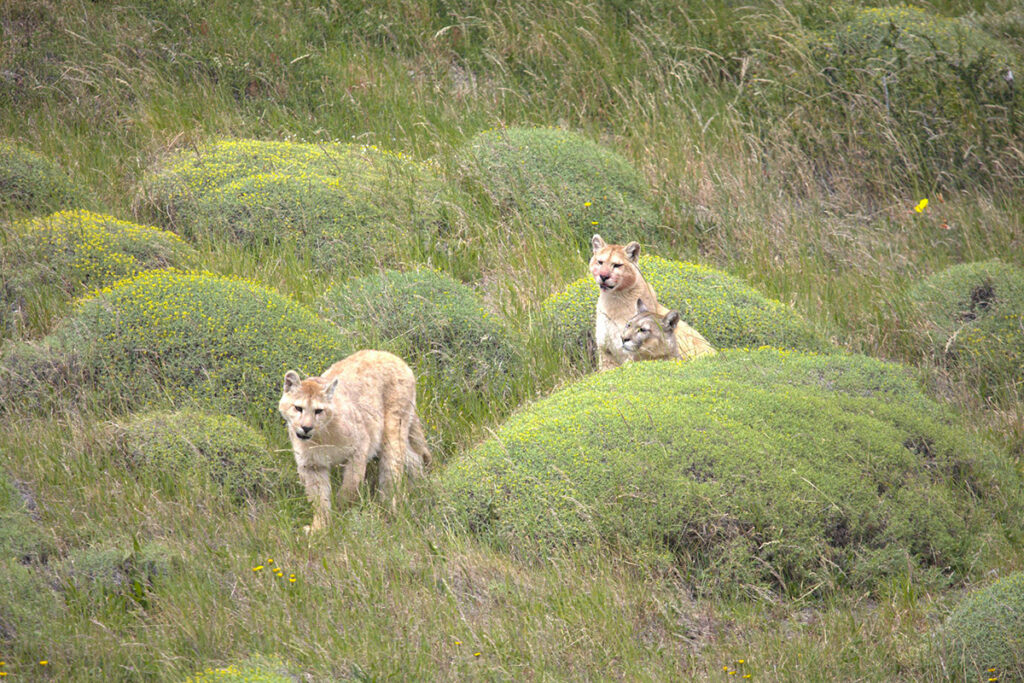
There are a few things one should know about puma spotting in Patagonia in order to have a successful trip. These enormous Patagonian pumas are the biggest of their species in the Americas. And this guide will tell you everything you need to know about the logistics of visiting Chile’s, nay, Patagonia’s, most popular park and how to give yourself the best chance of spotting Patagonia’s puma.
A quick intro to Torres del Paine
Lakes filled with pastel-colour turquoise water, glaciers packed with bright blue ice, snow-capped peaks and vertical granite towers that look especially spectacular at sunrise are all scenes that draw visitors from far and wide. Literally, for its distance from and lack of road connections to the rest of Chile means that almost any visitor is going to have a long trip on their hands in getting here.
Despite Torres del Paine’s isolation (or possibly because of it), this is Chile’s top trekking hotspot: the W or O treks, two multi-day routes named after their shape, draw 250,000 visitors per year, most of whom visit during the four months of summer. There are multiple options for organized trekking tours in Patagonia if you’d rather not hike on your own.
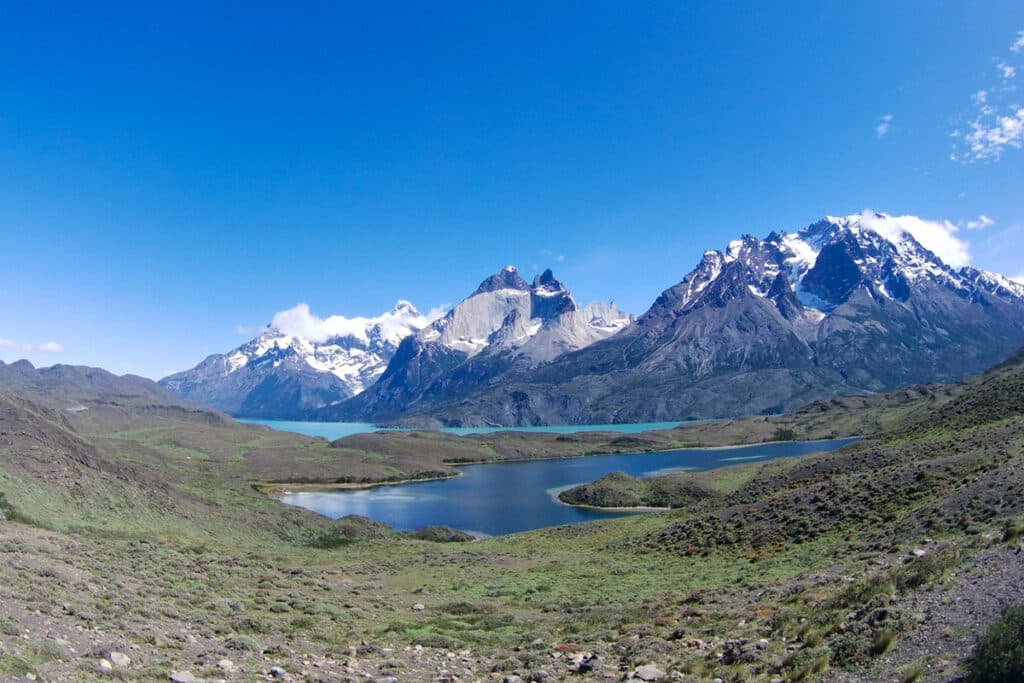
Torres del Paine is also widely regarded among puma watchers as the best place to find them, for a few key reasons. First, the population density of pumas is unusually high here, at twelve times that of other parts of South America.
Second, the open areas make it much easier to spot them from afar (though make no mistake, these seasoned guanaco hunters are still excellent at hiding).
Third, years of protection from hunting coupled with Torres del Paine’s popularity among visitors has made the pumas here less afraid of humans. Small wonder then that some smashing documentaries have been made about Patagonia pumas, including some rather dramatic guanaco hunts.
How to get to Torres del Paine
Puerto Natales is the closest town to Torres del Paine National Park and has both car rental agencies and bus links to the park. Driving to the park’s eastern entrance (the one nearest the Puma Zone) will take about an hour and a half. It’s a nice and easy drive since the road is in good condition and has plenty of straight stretches.
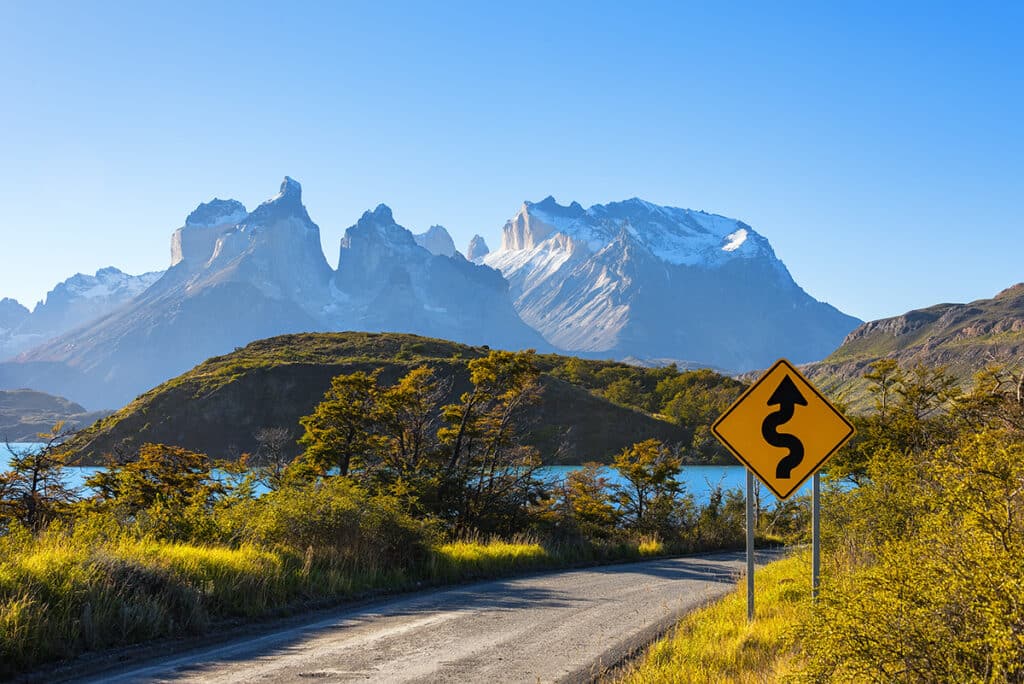
As for how to get to Puerto Natales itself, a small regional airport offers flights to Santiago and Puerto Montt in the summer. The much larger Punta Arenas airport further south is also a good option since it has more flights and a direct bus link (2 hours) to Puerto Natales. For anyone who likes a bit of adventure, there is also a five-day ferry trip through the roadless stretches of Chilean Patagonia from Puerto Montt.
Where to spot pumas in Torres del Paine
Technically speaking, this section’s title is inaccurate: the best area in which to find pumas is actually the area just east of the park, where the more open land and higher concentration of guanacos means a visit is more likely to result in a sighting.
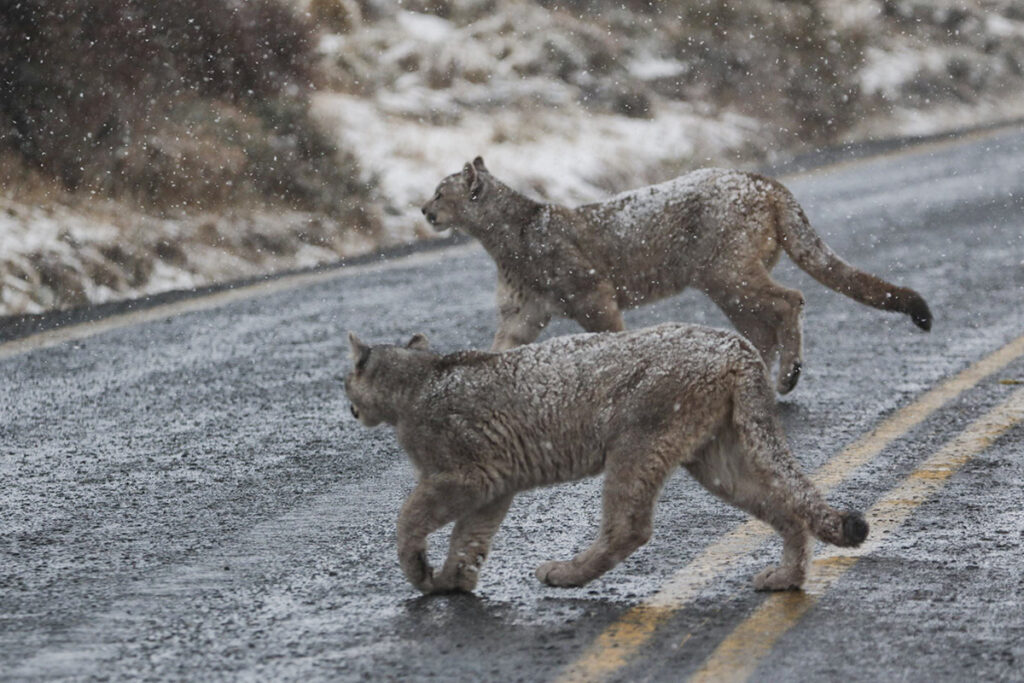
This area spans from the Lago Sarmiento and Laguna Amarga entrances, eastwards to the junctions between each entrance’s access road and the road to Puerto Natales.
How to spot pumas in Torres del Paine
Because the “Puma Zone” is private land owned by Estancia Laguna Amarga, there are two main ways of searching for pumas around here: taking a guided tour and cruising down the roads (which are public). The first will give you a near-guaranteed chance of success but will also cost an arm and a leg. The second is significantly cheaper while still offering a decent chance of success.
Taking a Patagonia puma tracking tour
Puma watching tours are not cheap. $1000 US dollars, to be clear. That is how much it will cost you to take one of Estancia’s Puma tours.
For anyone who hasn’t immediately skipped to the next section, here’s what you’ll get for paying this pretty penny: a guide, supported by expert puma trackers, off-road access to the Puma Zone, a 99% chance of successfully spotting pumas and some fairly high chances of getting excellent shots too.
Be sure to book well ahead, as a guide I met said they get booked out six months in advance.
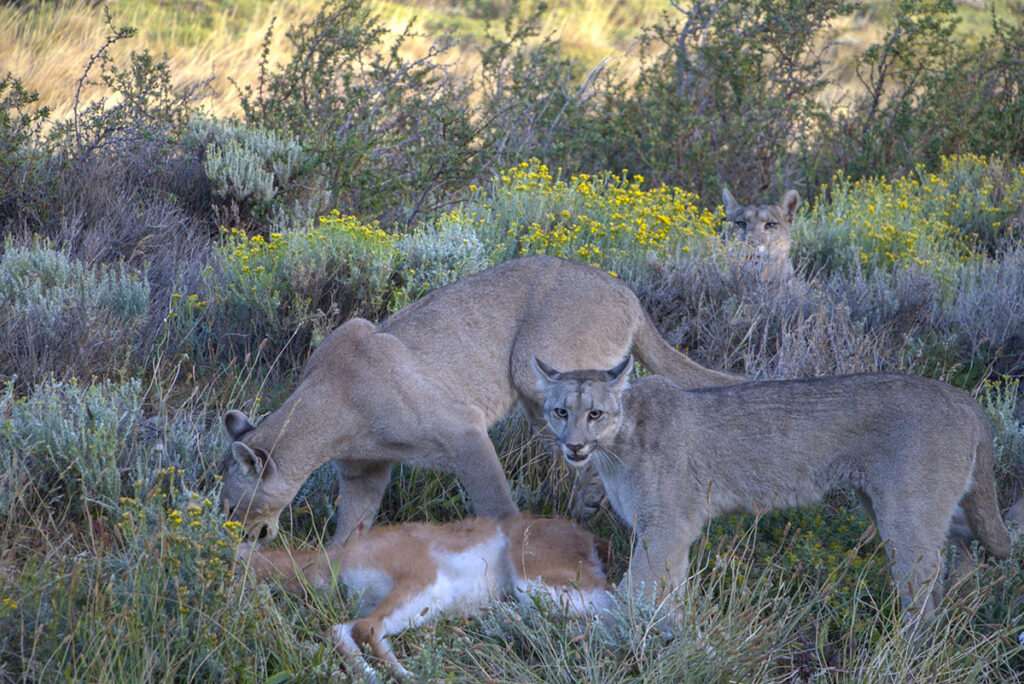
Since you’ll be in good hands, the only tip to be given here is to follow your guide’s instructions.
Leona Amarga is the best company to book with since they are run by Estancia’s owners.
Tracking Patagonian pumas independently
Slowly driving around the Estancia’s publicly accessible roads does require more luck than taking a tour, but it’s far from a half-measure. Many puma searchers who do it come out successful, and even casual visitors entering and exiting the park have chanced upon pumas by the roadside quite frequently.
This probably won’t come as a surprise, but the early morning and evening are the best times to go searching. Doing so also affords the opportunity to see the sun rising/ setting over the granite towers to the west.
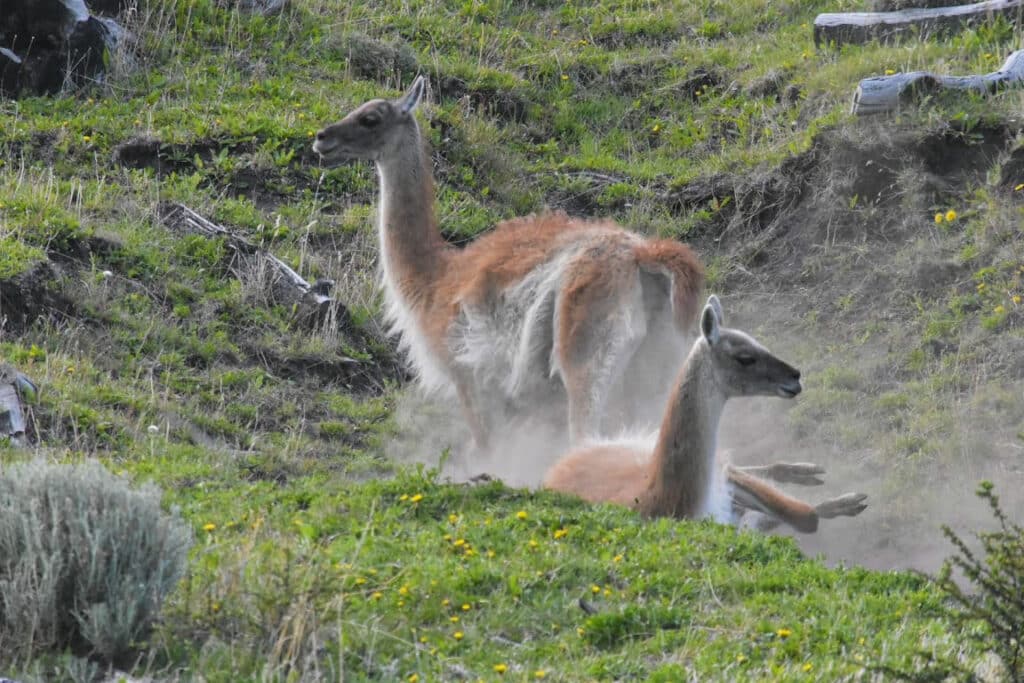
An old guide’s trick for spotting pumas is to listen out for guanacos’ alarm calls, and since they’ve only one predator around here that makes things quite a bit easier. If the guanacos start running, look towards the direction they’ve fled from.
Chances are there’s a puma there somewhere, and once the hunt has failed they usually stop being stealthy. You might get even luckier and see the puma hunting, which involves a mix of claw-driven piggybacking and the cat trying to get its jaws around the guanaco’s throat.
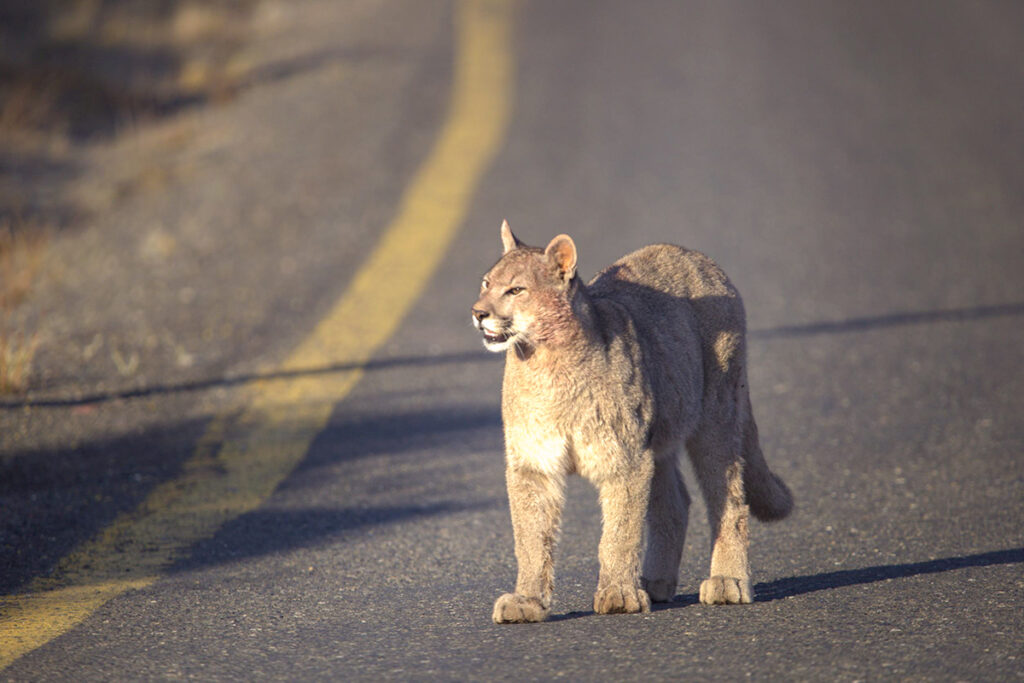
Do remember not to get off the road, even if it would get you a great shot. As this land is private, doing so would be trespassing.
If you do this method, aim to spend at least three mornings searching for pumas. A puma guide I met and spoke to said this would raise your chances to near-guaranteed levels (he was amazingly honest when dishing out tips for puma-searching independently).
Writer’s experience
There are two rules in wildlife spotting that trump all the rest: 1. Be lucky. 2. Don’t be unlucky.
Sadly, it seems I’ve broken them both. Despite my best efforts, a heap of prior research, a little insider knowledge and some stories of sightings from a couple of days ago, this puma hunt has turned up nothing. I had my own set of wheels to get me around and a heap of prior research, including a little insider knowledge, but unfortunately, my luck did not hold out. Didn’t even hear any guanaco alarm calls.
Oh well, some you win, some you lose. One day I’ll try again.
Still, searching around wildlife hotspots tends to turn up some other highlights, even if you miss your primary target – shoot for the moon, and all that. I managed to get some money shots of flamingos at sunrise with the towers in the background.
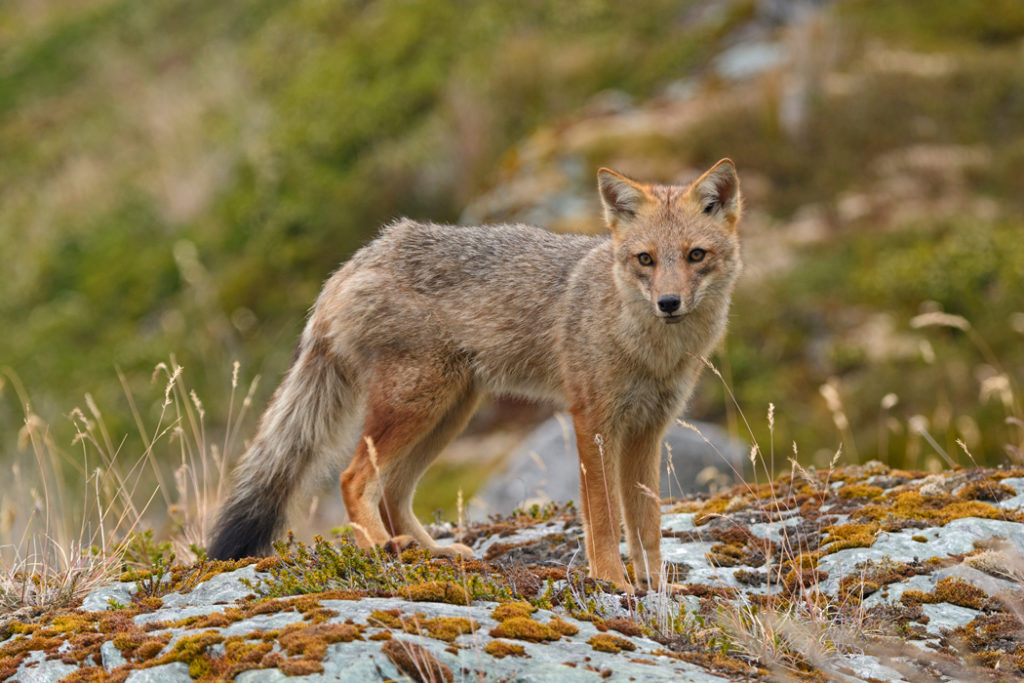
I also got some sightings of grey foxes that were rather gratifying since it proved to me that I’ve still got those eagle eyes. In terms of non-wildlife stuff, I met a film crew from Chilean national television and a wildlife tour guide, both of whom had some stories to share! And as I write this, I’m sipping a beer while enjoying an unobstructed view of the park’s famous towers. Pure bliss.
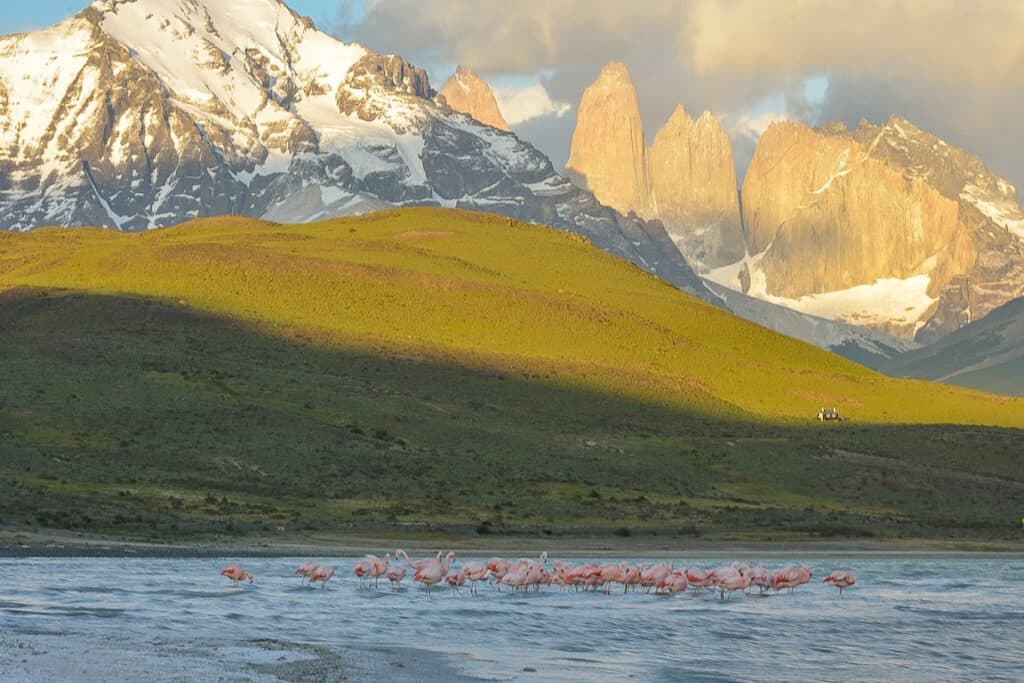
Update: Holy dooly.
My mission to find Patagonia’s pumas succeeded in the strangest way possible. As I was going to be doing a couple of days of trekking after puma hunting, I doubled back to Puerto Natales to get a bus the next day.
After it has entered the park, it winds its way through the hills, when after one bend it slows. Then stops. “Probably guanacos”, I think to myself. But after four whole seconds without the horn being sounded, my thoughts change to “that’s odd”. Then a couple of people point to something up the hill. The driver comes in, and starts conversing to a couple at the front, and I hear the word “puma” being mentioned. Could it be?
A passenger on the other side of the bus lets me sit next to them. Up on the slope, thirty metres away, is a pair of pumas rubbing heads and staring at the bus. They’re completely unfazed by our presence – in fact, they almost look bored. And then, in the grass in front of them, a small brown cub peeks its head out. How curious – male pumas rarely stay to take care of young, so it must be a mother and an older cub.
“What are the odds”, I ask myself, and as if the man were clairvoyant, the driver starts speaking: “This is the first time in 15 years of working [as a driver] that I’ve seen them”.
The only thing tempering my joy is the fact that my camera, with its zoom lens, happens to be in my backpack in the hold. I’m at least able to get a shot of another traveller’s camera screen for some “proof shots”.
Rules 1 and 2 have been thoroughly followed.
When to go
Any time of the year is good for pumas, so the answer really comes down to puma-aside factors.
Summer, from November to April, is the high season, though not a bad time to visit by any stretch for puma watchers. Although the national park itself is busier, the Estancia area is still quite quiet early in the morning. Accommodation should be booked in advance, though Goiien House (see the accommodation section) generally had availability at all times.
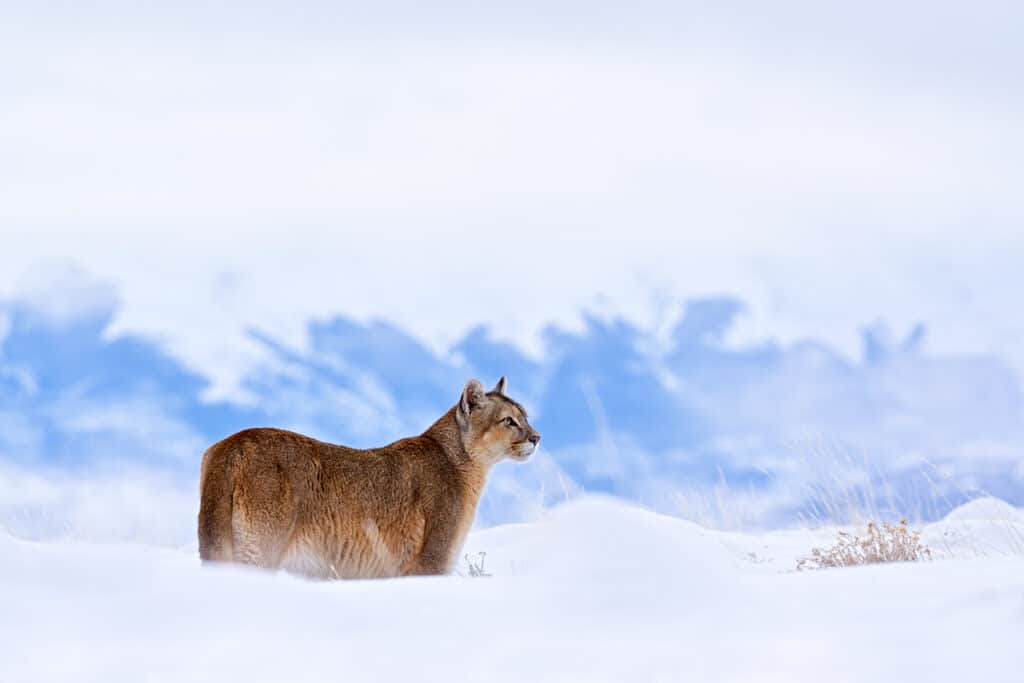
Winter (May through August) is also a good time to visit for Patagonia puma quest since they’re more active at this time of the year and the park is much quieter. If photography is your aim then you’ll love this time of year, since there’s the possibility of seeing the cats in the snow.
Doing so does present additional challenges since many lodgings close during this time and the roads are icy, so be prepared for a bit more of an adventure!
Are Patagonia pumas dangerous?
Short answer: not at all.
Long answer: Every year, roughly 15% of the park’s 250,000 annual visitors encounter pumas while trekking the W and O trails (while these lie out with the puma zone, they still run through puma habitat). And yet, there has never been an attack on humans here.
Pumas generally don’t attack people unless they feel threatened, so by keeping your distance you should be fine. If you encounter one that starts getting a little too close for comfort, stand your ground and wave your arms. Of course, this won’t exactly be a problem if you’re in a car or with a guide.
A word of warning: Torres del Paine is expensive
Chilean Patagonia, in general, is the most expensive area of Latin America to travel around (and to, for that matter). Prices in the major towns are generally akin to the US and Western Europe, while in Torres del Paine itself, they can easily be equal to a more expensive country such as Norway or Switzerland. Things will get even more expensive once you’re on the O or W treks, away from the roads.
All sample prices below are in Chilean pesos, unless said otherwise.
Prices in Puerto Natales:
- Cappuccino in a cafe: $3,500
- Sit-down meal: $9,000
- Completo (Chilean hot dog) from a stand: $4,000
- Pint of local beer: $5,000
- Bed in a hostel dorm: $15,000
Prices at Goiien House:
- Bed in a dorm with sheets: $61,000
- Dinner (main course only): $12,000
- Small bottle of beer: $4,000
Prices in Torres del Paine:
- Dorm bed in Refugio Grey without sheets: US$40
- Dorm bed with sheets: US$92
- Campsite along the W trek: US$10
- Tube of pringles from Lago Grey’s visitor centre: $7,000
- Entrance fee to the park: US$35 (US$49 for a three-day, multi-entry pass)
- Coffee and an empanada: $7,000
The only somewhat cheap thing to be found in Torres del Paine was a small cup of coffee from the Lago Grey visitor centre, which cost roughly $2,000.
Where to stay for Patagonia Puma Quest
A review of Goiien House (AKA Refugio Laguna Amarga)
Goiien House, located just a minute’s drive from Entrada Amarga, is my top recommendation for a few reasons.
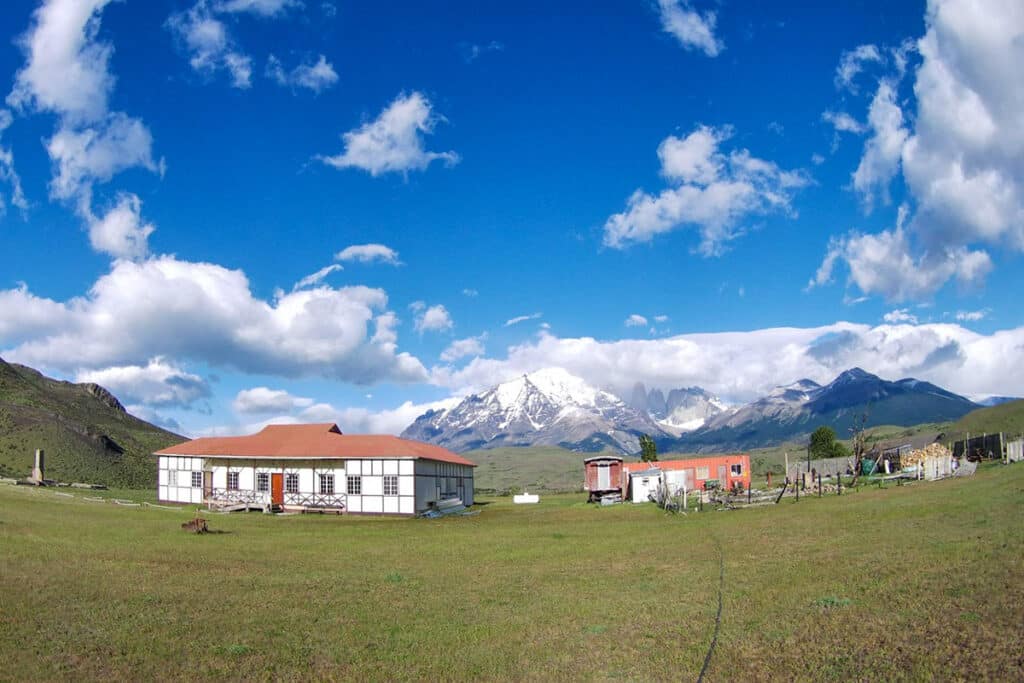
First, this property is the only one located within the Puma Zone. Not only is it close to all the hotspots, but also a small number of visitors have seen pumas from the comfort of their rooms.
Second, it’s the cheapest non-camping accommodation option in the entire Torres del Paine area. Dorm beds start at $61,000 (Chilean Pesos), which is still far from cheap, but the next cheapest option for a dorm bed with sheets is north of $90,000.
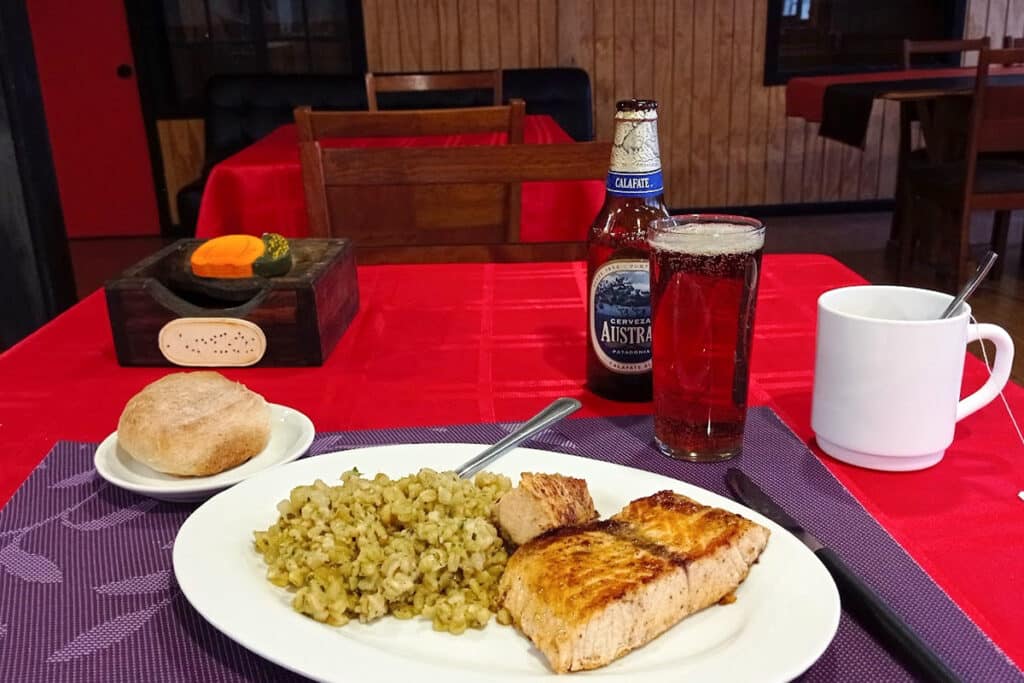
Breakfast is also included, and the dining/ common area gives you a great view of the towers. It’s a little ironic when one considers the eye-watering amounts they charge for a puma tour, but I’m certainly not complaining!
Third, a bit of fun trivia about this place: this is where the BBC film crews stay when filming pumas.
Finally, one can book with them on Booking.com, and they’ve got what may just be the most liberal cancellation policy ever – it’s completely free until 6 PM on the day of check-in.
They still go by their old name of Refugio Laguna Amarga on some sites including Google Maps, and the Tripadvisor listing for this name is still active as well as that for the new one. While the property has mixed reviews on both sites, I found it a nice enough place to stay.
Yes, it is expensive, but so too is everything in Torres del Paine (see the previous section). The staff were pleasant enough and the beds were comfy, and fireplaces in the halls kept the place warm at night.
The only downsides to staying here are that there’s no kitchen for guests to use, and the only room type is shared dorms. Some of them are two-bed dorms, so you can book two beds and request one of these if you’d like some privacy.
Other Accommodation Options
If you don’t mind an early start, staying in Puerto Natales (check the options here) and driving to the park each day is perfectly doable. The Puma Zone takes about an hour and a half to drive to, so aim to be up and about at 4.30 AM.
Otherwise, another good option is Laguna Azul Campsite, located fifteen minutes’ drive north of the Puma Zone. Campsites cost $9,000 per night and come with a view of the towers across the lake. You will need to rent out camping gear if you don’t have your own, and Puerto Natales has several rental places.
Other accommodation options within the park can range from basic campsites along the W and O treks (not recommended if you’re looking to spot pumas since they’re generally far from any roads) to five-star properties such as Hotel Lago Grey.
Finally, if you don’t mind a bit of roughing it, sleeping in your car or campervan is perfectly possible. Although wild camping isn’t permitted on the Estancia area, if you find a secluded layby and are discrete you shouldn’t have any problems with the Carabineros (Chilean police) or landowners.
A quick guide to Puerto Natales
Practically everybody who passes through the gateway town to Torres del Paine is either organising a trip to the park or recovering from a trek, and Puerto Natales is a great place to do both. Equipment rental and tour agencies line the streets, and there are plenty of accommodation options for every budget level.
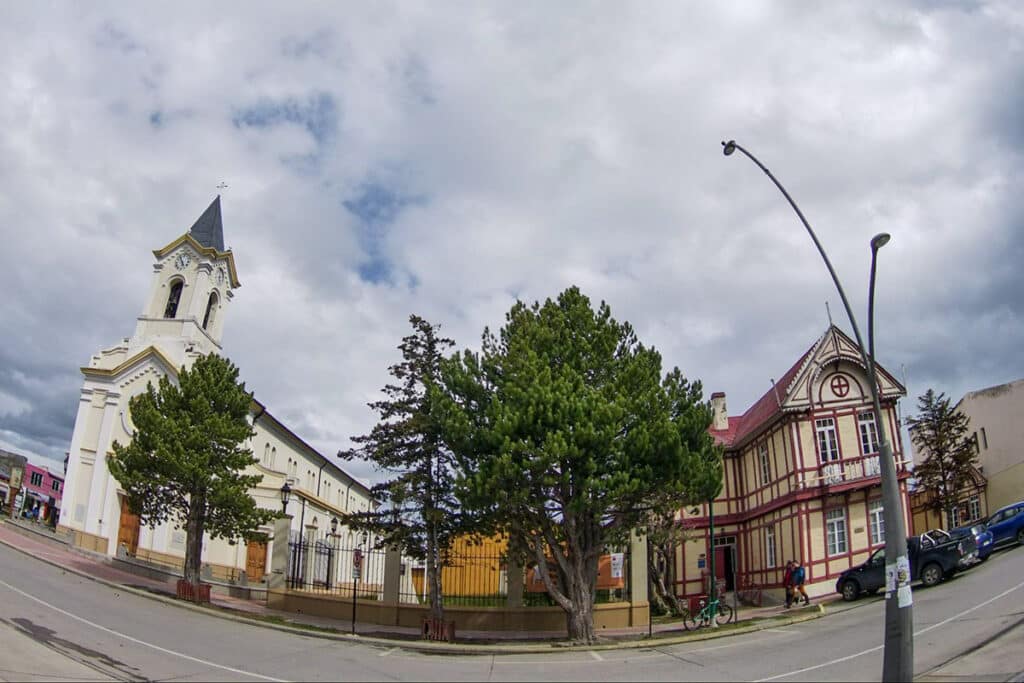
Since visitors here tend to have the cash to splash, there are also plenty of mod cons: Italian-style pizza restaurants, a sushi bar, a cinema and good-quality coffee can all be had here. The town is quite walkable, though taxis are plentiful. Drinking tap water around here is perfectly safe, and it tastes great. Take it from me, I’m Scottish!
If you’re looking for something to do, the town’s seafront (Costanera) is a great place to unwind and gaze at the snowcapped mountains across the bay, while cyclists and skateboarders pass by.
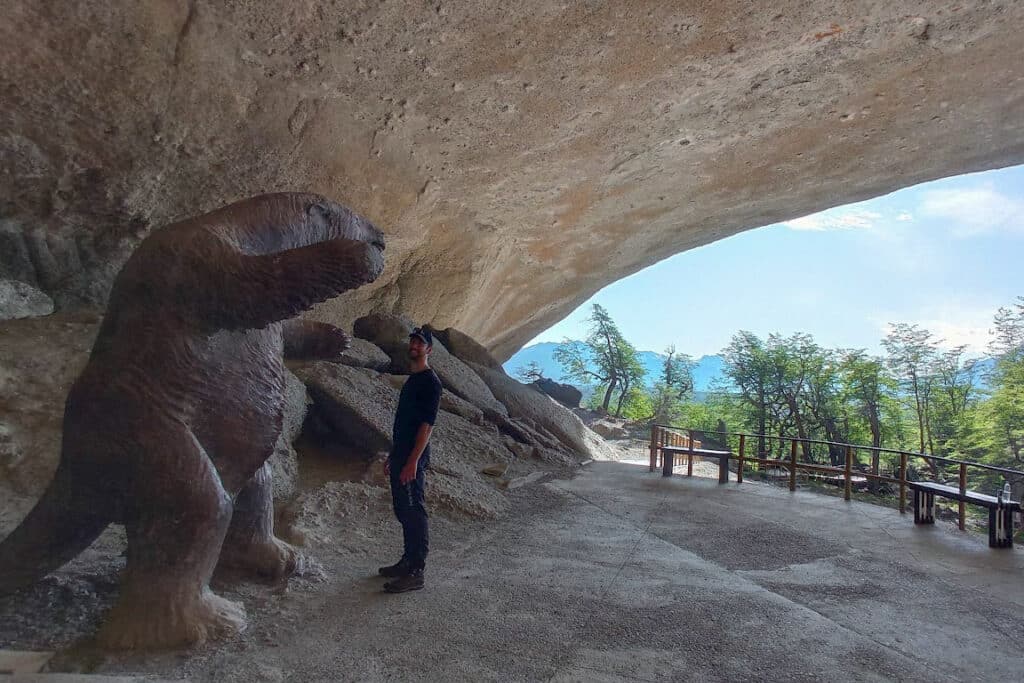
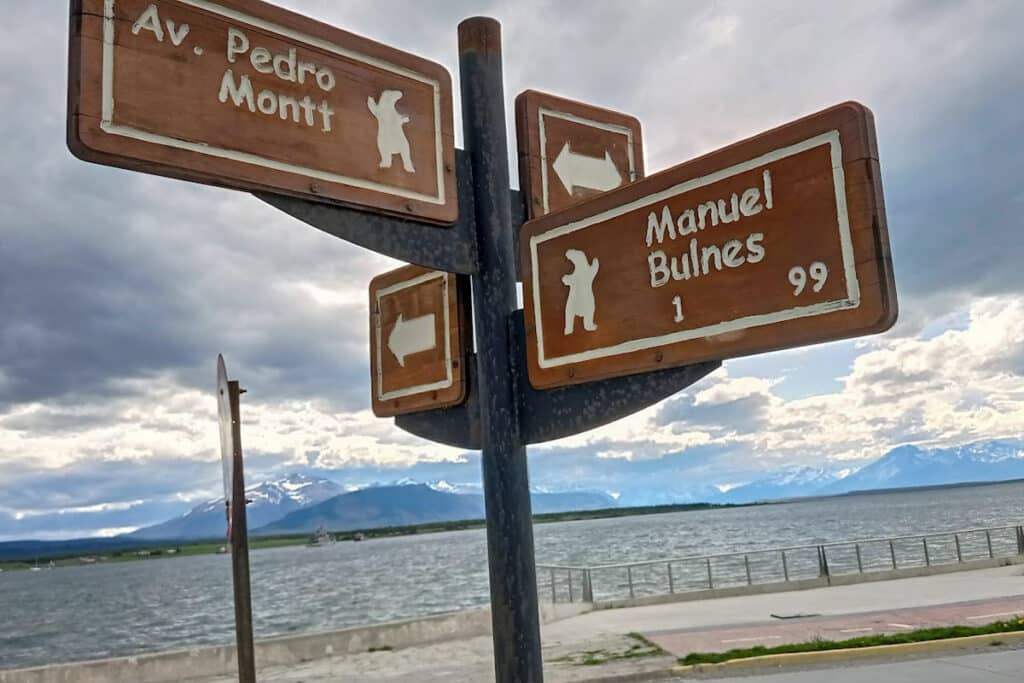
A little further afield is the Cueva del Milodon, a massive grotto in which lived the now-extinct Milodon. A variety of fossils have been found here, including a milodon pelt from when the cave was first discovered. Nothing short of spectacular, seeing as this animal lived 10,000 years ago! Milodon memorabilia is all over Puerto Natales, from the street signs to the statue at the Costanera roundabout.
And if you are looking for more wildlife adventures in Patagonia, don’t miss the opportunity to see penguins in Ushuaia.
Shaun Edmond is an avid wildlife spotter, content marketer and traveller, who writes about wildlife travel on a backpacker’s budget over on Shoestring Safari.
More Wildlife Adventures in Latin America
- A Practical Guide to Visiting Iguazu Falls in Brazil & Argentina
- When and Where to See Animals in the Wild: Guide to Wildlife Watching
- Guide to Planning Your Patagonia Puma Quest in Torres Del Paine
- Where to See Peninsula Valdes Orcas and Other Patagonian Wildlife
- Spotting Wildlife in Monteverde Cloud Forest Reserve, Costa Rica
- Best Galapagos Islands for Spotting Wildlife
- 35 Amazing Brazilian Animals and Best Places to See Wildlife in Brazil
- Top 10 Pantanal Adventures For Your Brazil Holidays
- 25 Landmarks in Costa Rica to Add to Your Bucket List
- Brazil Itinerary: watching wildlife in Brazil without breaking the budget

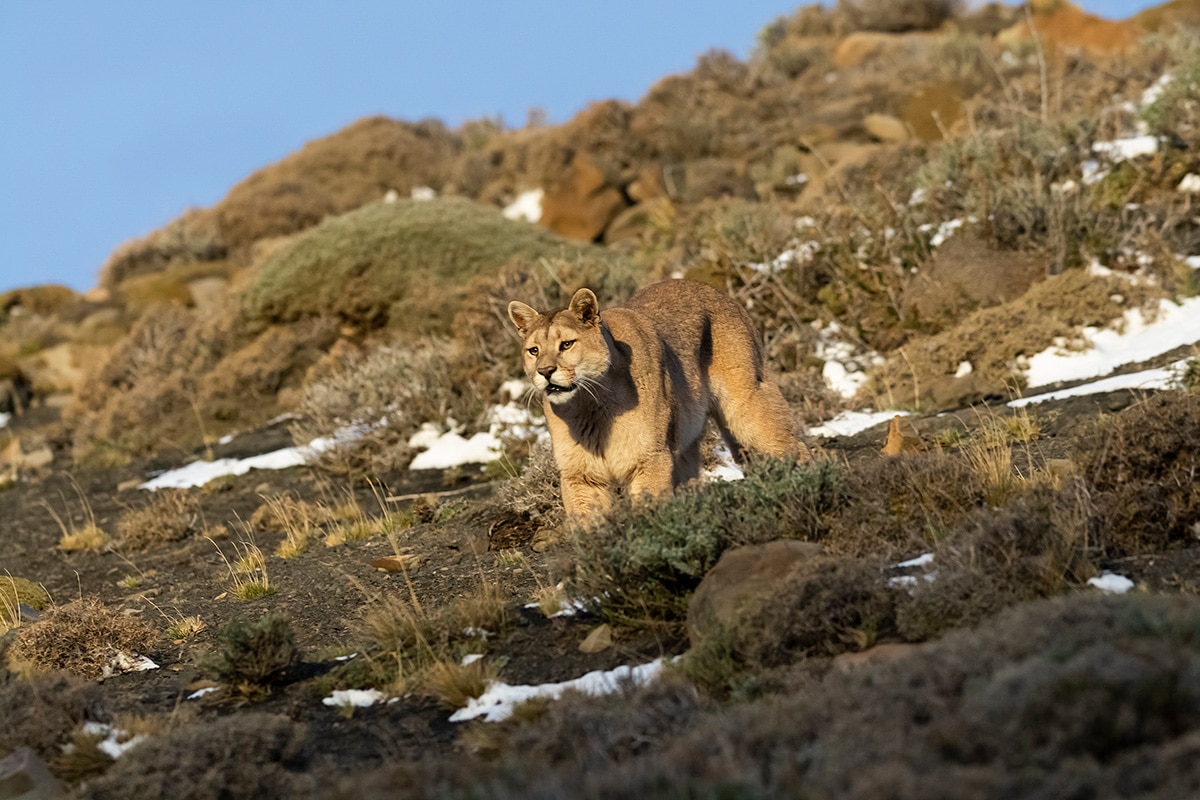
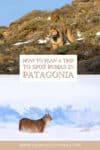
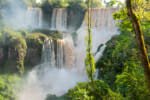
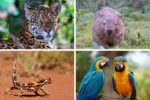
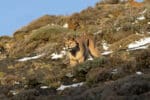
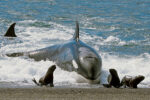
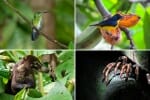

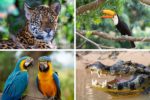
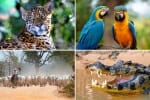
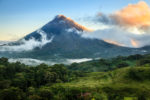
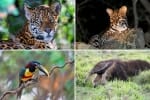
Dear Shaun,
By independently you mean you drove inside the park in a car or how?
I thought one ha to be accompanied by a local guide?
Or did you drove outside the park area?
Kins regards Mette